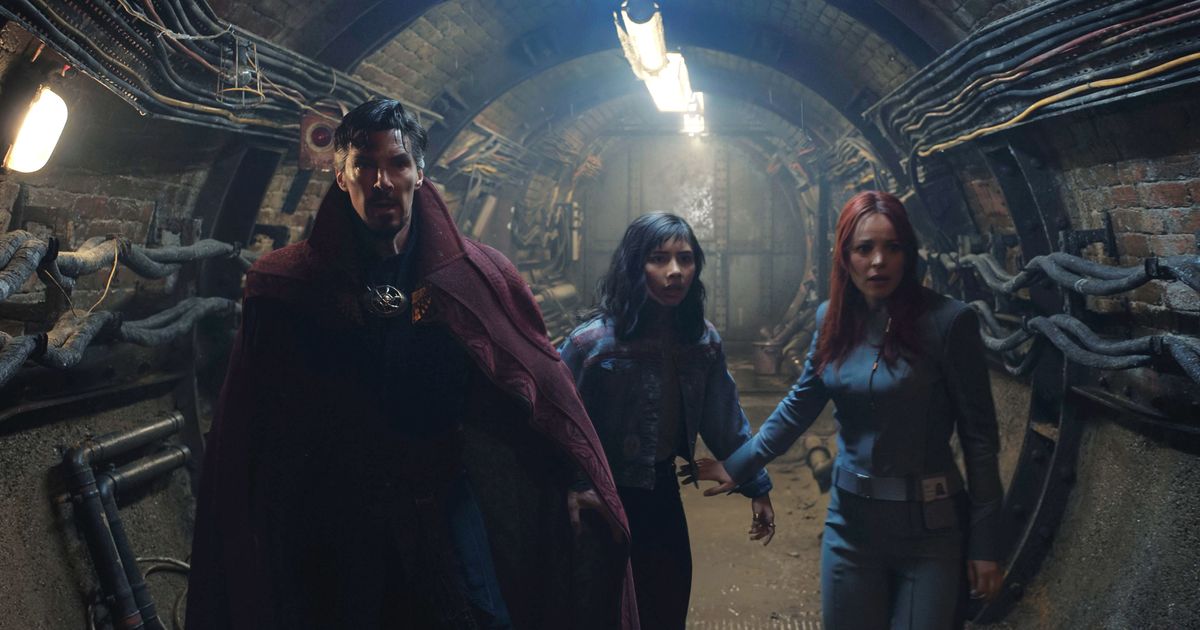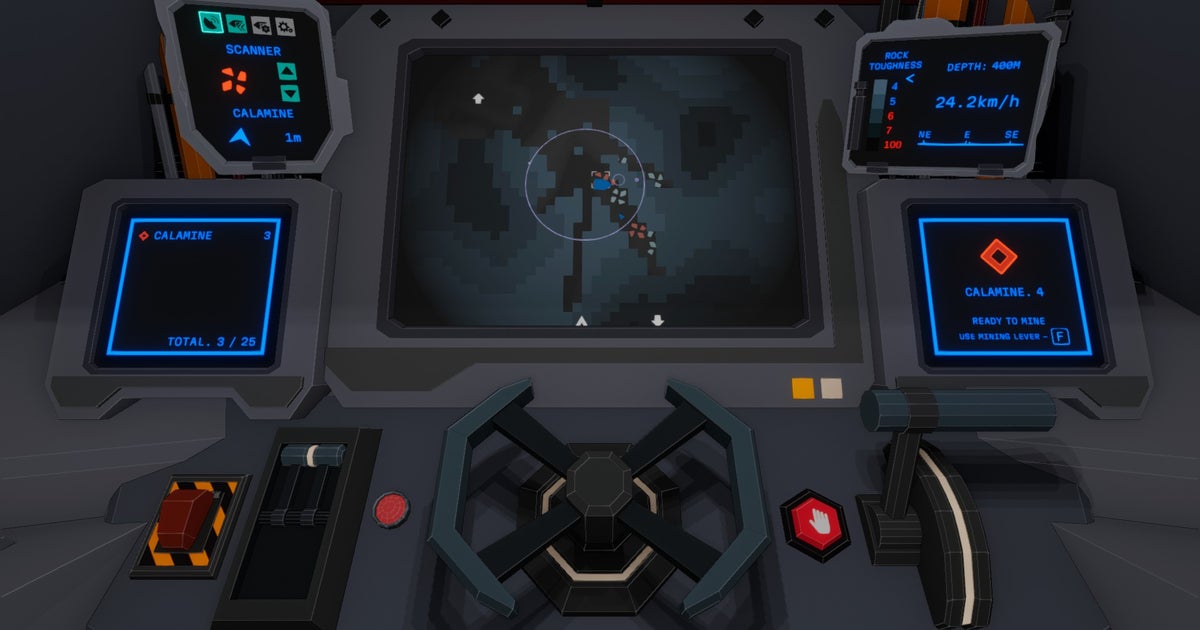
Sam Raimi Exploding Superheroes’ Heads Is Good, Actually
Spoilers follow for the film Doctor Strange in the Multiverse of Madness.
Violence in a Marvel Cinematic Universe movie is nothing new. From 2008’s Iron Man, the first MCU film, through the rest of the 22 installments in the Infinity Saga and five films into Phase Four, every entry has received the same PG-13 rating for some version of, in the MPAA’s terms, “intense sequences” of action and combat. Characters have been abducted, tortured, brainwashed, and forcibly sterilized. They fight with their fists, with their minds, and with all kinds of weapons. Worlds have been destroyed, and billions of people have been erased.
But over the past 14 years, despite all the fallen bodies and all the (repetitive) world saving, barely a drop of blood has been spilled onscreen — until Doctor Strange in the Multiverse of Madness gave filmmaker Sam Raimi the slightest bit of flexibility to get weird and gruesome. People are (wrongly) up in arms that Multiverse of Madness actually dares to show the horrifying physical impact of all the warfare that drives the MCU, but Raimi’s incorporation of telekinesis, reanimation, and the underworld makes a specific point. In introducing an array of solemn, self-serious superheroes and then murdering them through gleefully diabolical means, Multiverse of Madness is the most winking this film franchise has been in years, and not in the same old quippy, look-at-Cap’s-butt way. The MCU has always been about death as an abstract form of entertainment, but with Multiverse of Madness, Raimi makes it literal.
The film’s most violent scene comes about midway through, after screenwriter Michael Waldron has flattened Elizabeth Olsen’s former Avenger, Wanda Maximoff, into a cliché by using her rage and grief over the loss of her sons as fuel for her transformation into the villainous Scarlet Witch. As Vulture’s own Angelica Jade Bastién wrote in her review, the Scarlet Witch character is “thinly written as a crazy bitch who can control neither her emotions nor her great powers,” and yes, it’s all very similar to the story line the MCU already gave Maximoff in the Disney+ miniseries WandaVision. In this retread, Multiverse of Madness sends the Scarlet Witch traveling through an endless series of other universes in pursuit of America Chavez (Xochitl Gomez), a teen whose ability to travel through dimensions could help the Scarlet Witch secure a life in a universe where her sons are still alive and she can be a suburban housewife.
This leads to a showdown between Wanda and America and her protector, Doctor Strange (Benedict Cumberbatch), in the Earth-838 reality. The planet is both like Earth — cars everywhere, shiny skyscrapers, Bruce Campbell being the best — and not, primarily because of a group of superheroes called the Illuminati. Somewhat like the Avengers, the Illuminati are tasked with saving the world; in this reality, their version of Strange betrayed them by using a book of evil spells called the Darkhold and causing the annihilation of another universe, so they killed him. When our version of Strange appears — from the reality referred to as Earth-616, as explained by Earth-838’s scientist version of Christine Palmer (Rachel McAdams) — he’s taken into custody by the Illuminati, none of whom trust him.
Multiverse of Madness packs most of its cameos into this scene and pulls characters from other Marvel properties, like the animated series What If…?, the X-Men and Fantastic Four franchises, and the short-lived ABC series Inhumans. The Illuminati lineup consists of onetime Strange foe Baron Karl Mordo (Chiwetel Ejiofor); Captain Carter (Hayley Atwell), a version of Peggy Carter, here stepping in as a super-soldier; Captain Marvel (Lashana Lynch), a.k.a. Maria Rambeau, who in this universe absorbed cosmic powers instead of Carol Danvers (Brie Larson); Black Bolt (Anson Mount), who can destroy matter with his voice; Reed Richards/Mr. Fantastic (John Krasinski), whose casting is the film’s most blatant moment of fan service; and Professor Charles Xavier (Patrick Stewart) in a yellow hover chair that evokes the character’s look in the ’90s animated series, which celebrates its 30th anniversary this year. “We will see what kind of Strange you are,” they promise. But then the Scarlet Witch shows up.
In the scene that follows, the Scarlet Witch eviscerates the Illuminati one by one in a tumbling cascade of Raimi’s myriad filmmaking signatures. The gore and slapstick humor of his Evil Dead series, the jaunty wryness of Darkman, and the pitiless affect of Drag Me to Hell all come to mind. Wanda glues Black Bolt’s mouth shut, Mr. Anderson–style, turning the destructive force of his voice back on himself, causing him to blow up his own brain. She unravels the attacking Mr. Fantastic, whose power is super-stretchiness, into ribbons of elastic that can no longer hold his shape. Captain Carter insists, “I can do this all day,” but Scarlet Witch flings Carter’s own shield at her and slices her in half. Then she knocks Captain Marvel out of the sky and crushes her under a statue before psychically fending off Professor Xavier and exploding his brain, too. She dismisses the Illuminati as a “circus of clowns,” which doesn’t seem wrong given how much of a joke they are against her.
It’s all more like The Boys than anything seen in the MCU before, and the thrill of this scene comes from how committed Raimi is to the same kind of subversion. How to challenge the inherent fascism of a small group of superheroes deciding what is best for their universe? What would blowing that up and using those inpiduals’ powers against them look like? After dozens of MCU films in which the good guys find ways to win against seemingly more powerful villains, there’s a darkly riveting quality to watching do-gooders like Mr. Fantastic getting wiped off the board. And while the Scarlet Witch’s motivations are disappointingly thin in Multiverse of Madness, her attack produces some of the film’s most memorable images — blood dripping off Captain Carter’s Union Jack shield, red mist spilling through the pure whiteness of Earth-838 Wanda’s brain indicating possession by the Scarlet Witch. Raimi takes the death and murder that drive the MCU — too unpalatable to acknowledge graphically in other films — and manipulates them for our entertainment. Consider, too, how Doctor Strange possesses the corpse of another universe’s Doctor Strange and fashions “the souls of the damned,” with their sneering skull faces and clawed fingers, into a cape in the final act. For a franchise that has otherwise emphasized death as a source of endless trauma and a justification for all kinds of questionable behavior (Hawkeye slaughtering his way through Japan, anyone?), these are cleverly irreverent twists.
Doctor Strange in the Multiverse of Madness is still an MCU movie, after all, and chances are this won’t be the last we see of the Illuminati — not when these characters’ presence in Earth-838 sets up their potential existence in Earth-616; not when someone specifically references Mr. Fantastic’s wife, Susan Storm/the Invisible Woman, whom a vocal contingent of MCU fans wants to be played by Krasinski’s real-life wife, Emily Blunt; and not when the film ends by revealing that Doctor Strange caused an incursion that could destroy Earth-616. But until the MCU forces that universe upon us, Raimi’s willingness to kill his darlings with such macabre verve is a welcome interruption in the franchise’s regularly scheduled PG-13 programming.





























.png?fit=300%2C300&ssl=1)





























.jpg?fit=300%2C300&ssl=1)






.jpg?width=1200&height=630&fit=crop&enable=upscale&auto=webp)
